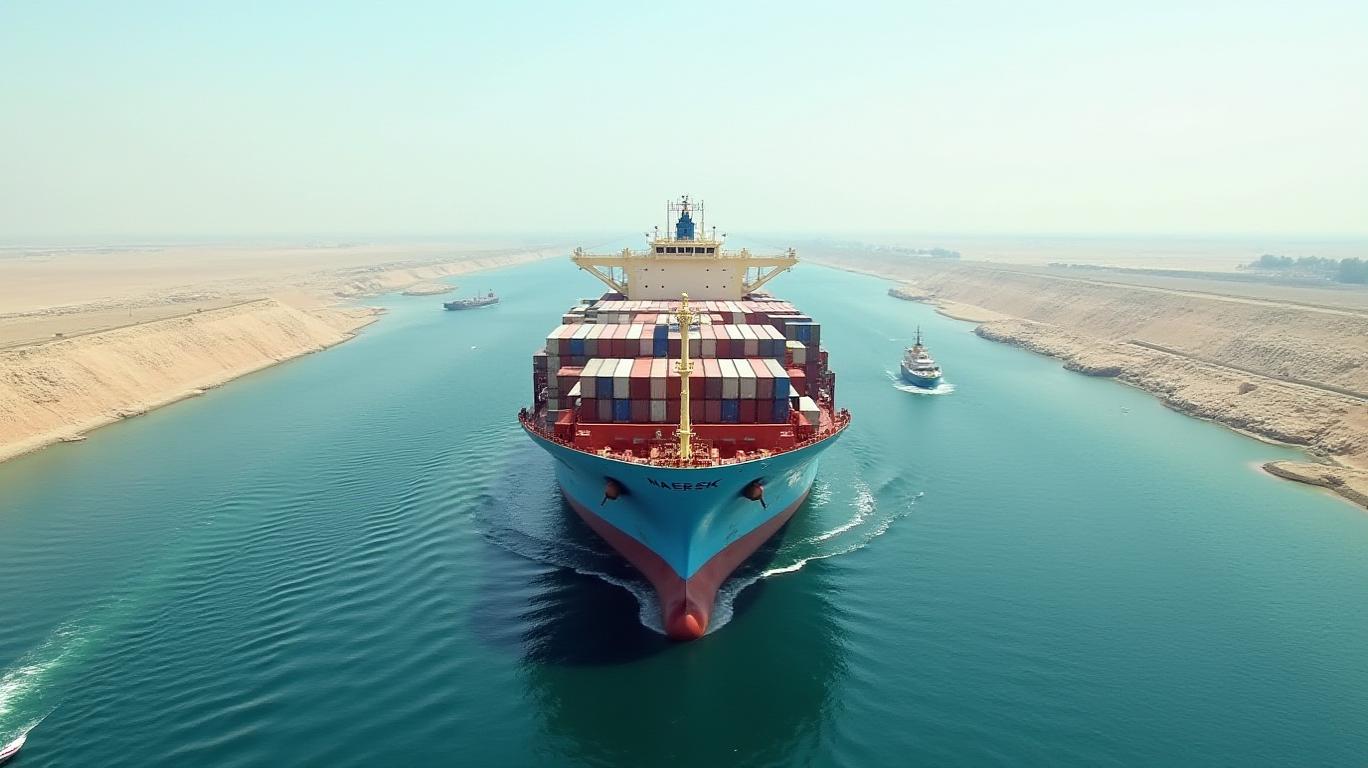Maersk Navigates Global Trade Crosscurrents with Strong Q1 Results
A.P. Moller-Maersk A/S has delivered a resilient performance in Q1 2025, defying geopolitical and macroeconomic headwinds with a 7.8% year-on-year revenue increase to $13.32 billion and a 556% surge in net profit to $1.16 billion. The shipping giant’s results underscore its ability to capitalize on operational efficiency and demand stability, even as global container volumes face uncertainty.

Key Financial Drivers
The quarter’s standout metric was a 70% annual rise in EBITDA to $2.71 billion, far exceeding analysts’ average forecast of $2.57 billion. This reflects Maersk’s cost discipline and automation initiatives, which have streamlined operations across its three core divisions:
- Ocean: Maintained pricing power amid shifting trade flows.
- Logistics & Services: Expanded its “integrator” strategy, bundling freight, customs, and warehousing services.
- Terminals: Leveraged automation and port partnerships to boost efficiency.
CEO Vincent Clerc emphasized that the company’s reliability and agility—including a robust Ocean network and logistics support—have positioned Maersk to outperform peers during supply chain disruptions. This was evident in the $1.25 billion EBIT, a stark improvement from $177 million in Q1 2024, as the company reduced reliance on volatile spot rates and prioritized long-term contracts.
Navigating Uncertainty
Despite Maersk’s strong Q1, the global container market outlook for 2025 remains cautious, with volume growth projected between -1% to +4% due to trade tensions and weak consumer demand in key regions. Maersk, however, has maintained its full-year guidance:
- Underlying EBITDA: $6.0–9.0 billion (up from $7.2 billion in 2024).
- Underlying EBIT: $0–3.0 billion (vs. $2.3 billion in 2024).
- Free cash flow: At least -$3.0 billion (improved from -$4.1 billion in 2024).
These targets suggest confidence in its ability to sustain margins through cost controls and automation, such as its Digital Container System, which reduces delays by 30% in major ports.
Risks and Strategic Focus
The company faces headwinds, including overcapacity in the shipping sector and slowing demand from Asia. Yet Maersk’s diversified revenue streams—Logistics & Services now account for 30% of profit—mitigate exposure to traditional container volatility. Additionally, its $2 billion ESG investment plan through 2030 aims to reduce emissions by 50%, aligning with regulatory trends and investor preferences.
Conclusion: A Steady Compass in Unstable Waters
Maersk’s Q1 results highlight its transition from a traditional shipping firm to a logistics integrator with $2.71 billion EBITDA and a 556% net profit jump, proving its strategy works. While macro risks persist, the company’s focus on automation, long-term contracts, and diversified services positions it to outperform peers in volatile markets.
Investors should note that Maersk’s 2025 guidance midpoint of $7.5 billion EBITDA implies a 6% growth from 2024, achievable if its cost controls offset volume headwinds. With a debt-to-equity ratio of 0.3x (comfortably below industry averages), Maersk retains financial flexibility to weather downturns.
In a sector where 70% of peers cut dividends last year, Maersk’s decision to maintain a 30% payout ratio signals confidence in cash flow sustainability. For investors seeking exposure to global trade with a resilient operator, Maersk’s blend of operational excellence and strategic foresight makes it a compelling long-term bet.
As trade corridors shift and supply chains evolve, Maersk’s Q1 results confirm its status as a captain steering through turbulence—and investors may want to secure a seat on its deck.

_a26960071749827470514.jpeg)

_d6548da11749819995064.jpeg)





